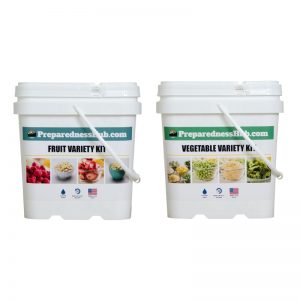 WASHINGTON (AP) — The prices that U.S. companies receive for their goods and services rose by the most in seven months in April, a sign that inflation may be picking up from very low levels.
WASHINGTON (AP) — The prices that U.S. companies receive for their goods and services rose by the most in seven months in April, a sign that inflation may be picking up from very low levels.
The producer price index rose a seasonally adjusted 0.6 percent from March to April, the Labor Department said Wednesday, after a 0.5 percent increase from February to March. April’s increases were led by higher food prices and greater retailer and wholesaler profit margins.
Over the past 12 months, producer prices have risen 2.1 percent, the biggest 12-month gain in more than two years. That figure is roughly in line with the Federal Reserve’s 2 percent inflation target. The producer price index measures price changes before they reach consumers.
Excluding the volatile categories of food, energy and retailer and wholesaler margins, however, the month-to-month increase in April was smaller: Core prices rose 0.3 percent from March.
Ian Shepherdson, chief economist at Pantheon Macroeconomics, noted that the profit margins dropped sharply over the winter before increasing in the past two months, “so we can’t yet say an upward trend is emerging.”
Still, the report suggests that inflation may be picking up after coming in below 2 percent for two years. That could reflect better economic health: Higher inflation is generally a sign of rising consumer demand.
Paul Dales, an economist at Capital Economics, noted that a sharp gain in profit margins for machinery and equipment wholesalers drove overall margins higher. That’s a sign that companies are stepping up their purchases of large equipment after a weak first quarter, Dales said.
A key question is whether the sharp increases in producer prices of the past two months will flow into consumer prices. Wage increases have been weak, and unemployment remains high at 6.3 percent. The squeeze for consumers means that manufacturers and retailers haven’t been able to raise prices much. April’s consumer price index will be released Thursday.
Dales forecasts that consumers will pay a bit more by 2015.
“We are expecting the stronger economic recovery and rising wage growth to push core (consumer) inflation above 2 percent next year,” he said.
The two months of big increases have lifted wholesale inflation from historically low levels. The producer price index rose just 1.2 percent in 2013 after a 1.4 percent increase in 2012.
Food costs jumped 2.7 percent in April, the highest in more than three years, driven by an 8.4 percent increase in meat prices.
Profit margins received by retailers and wholesalers rose 1.4 percent in April, the same as in the previous month. Margins are rebounding after sharp drops over the winter months. Profits had been held down by discounting after the winter holidays and by harsh weather in January and February that kept shoppers at home.
Low inflation has enabled the Fed to pursue extraordinary stimulus programs to try to boost spending, hiring and economic growth. It has begun to unwind some of its stimulus, cutting its monthly bond purchases to $45 billion from $85 billion last year. The bond purchases are intended to lower long-term interest rates.
But the Fed has kept the short-term interest rate it controls at nearly zero since December 2008. Higher inflation could raise pressure on the Fed to increase that rate earlier than it had planned.
Photo Credit: Nataliya Hora / Shutterstock.com
Copyright 2014 The Associated Press. All rights reserved. This material may not be published, broadcast, rewritten or redistributed.

 Freeze-dried Vegetable & Fruit Kit - 150 Servings
Freeze-dried Vegetable & Fruit Kit - 150 Servings